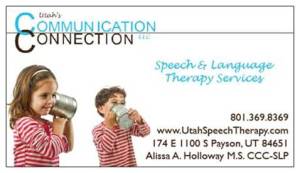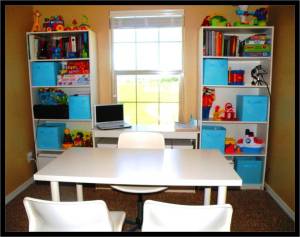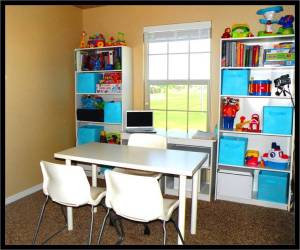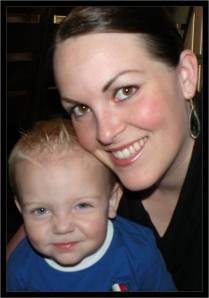
The TOP TEN techniques to teach /s/
1. DETERMINE THE PROBLEM…
The most common problems producing /s/ correctly are as follows:
a. Inability to produce the /s/ at all. (See tips 2 and 3)
b. Can say the /s/ all by itself, but omits it from words or conversation. (See tips 4 and 5)
c. Uses the /s/ in conversation but produces it with a frontal distortion (See tips 6 and 7)
d. Uses the /s/ in conversation but produces it with a lateral distortion (See tips 8 and 9)
Go to this link to read more about frontal and lateral distortions http://www.superduperinc.com/handouts/pdf/209_Lisp.pdf

2. THINK /T/…
No /s/??? No worries!!!
If your child is not able to produce /s/ at all – the first place I like to start is with a /t/.
Did you know that /t/ and /s/ are produced in the same place in your mouth?
They are both produced by touching the tip of your tongue to the bumpy spot directly behind your top front teeth (the alveolar ridge). However, a /t/ is produced by building up your air pressure and popping it out in one short burst, and an /s/ is produced by pushing air out continually.
So… I like to think of /s/ as a long form of /t/.
In order to get your child to be able to produce /s/ correctly, try my “T-to-S” therapy technique.

3. IT’S ON THE TIP OF MY TONGUE
If your child is not able to produce /s/ at all – another good idea is to give some simple directions.
All consonants have what speech therapists like to call a PLACE and a MANNER.
The PLACE of a sound refers to the specific point your articulators make contact in order to produce that sound. The MANNER of a sound refers to how the articulators are involved in producing that sound. When speaking about /s/, it’s place is the alveolar ridge (or the bumpy spot behind your front top teeth), and its manner is a fricative (or a sound produced by pushing air through a narrow opening – i.e. /f/, /th/). This information is helpful when trying to direct a child to produce /s/ correctly.
I often tell the child to put the tip of their tongue on the bumpy spot behind their front top teeth. If they are having a hard time finding the correct spot I usually gently rub the spot with a tongue depressor so that they can feel it. After they place the tip of their tongue on the bumpy spot, I have them bite their teeth closed, smile, and blow their air out. This often results in a beautiful /s/ sound.

4. WHAT’S IN A NAME?
If your child can say the /s/ all by itself (in isolation) but omits it from words or conversation, the best thing you can do is give the sound a name. Often times kids that struggle with speech sounds are too young to read, so referring to the sound your mouth produces by the letter you spell it with can be confusing. Also – in the English language certain sounds can be spelled with more than one letter. /S/ is a great example of this. The words “circus” and “some” are spelled with different letters at the beginning (c/s), but they both start with the same sound (produced by the mouth – /s/). This is obvious to you and I (adults) but is somewhat confusing to children who may not be proficient readers yet. It is much easier to refer to a sound by a name rather than a letter, as you can teach more consistently that way. Some possible name options for the /s/ sound are: “The Hissy Sound” or “The Snake Sound”. You can also come up with a name of your own. It is important to find a name that goes along with the sound or reminds the child of the sound. It is also important to be consistent and use the same name for the sound continually. After you have given the sound a name, you can use the name to remind your child when to use the sound.

5. LET’S GIVE EM A HAND
If your child can say the /s/ all by itself (in isolation) but omits it from words or conversation, the best thing you can do is give the sound a hand signal. A hand signal is a great way to reinforce a sound, or draw attention to it. You can emphasize a sound in a word by pairing a hand signal when the sound is said. If your child says a word that has an /s/ – but he/she omits the /s/, you can give them a simple reminder by showing them the hand signal that is paired with /s/. This is a way to give them a reminder without having to verbally direct them to fix their mistake. It is less intrusive and less overtly critical. One of the things I tell parents to do with their children for speech homework is to read one book a night and use the hand signal each time they produce an /s/. This shows the child which words contain an /s/. It helps emphasize the /s/’s in the story and draws extra attention to them. Both of these things are important for kids who are omitting the /s/ from words. The hand signal I use for /s/ starts by placing my right pointer finger on the back of my left hand. I then move my right hand in a squiggly line up my left arm (stopping at my elbow). I say a long /s/ sound while doing the movement.

6. CHECK FOR TONGUE THRUST
If your child can say the /s/ in conversation, but produces it with a frontal distortion, the first thing you should do is check for a tongue thrust. A tongue thrust is actually an abnormal swallow. Did you know that Speech Language Pathologists are not only speech experts, but swallowing experts as well? An abnormal swallow can greatly affect a child’s ability to produce sounds correctly as it can interfere with the proper development of the oral musculature. All individuals swallow with a tongue thrust during infancy, but eventually develop a mature swallow pattern over time (which also helps their speech develop correctly over time). If the tongue thrust does not develop into a mature swallow, speech development can be negatively affected. I have worked with many individuals who swallow with a tongue thrust and these individuals often have co-occurring speech issues as well. It is often the case that I treat an individual’s tongue thrust and their speech issues improve concurrently (with NO actual speech therapy given). Tongue thrust therapy is actually very fast (it can usually be completed within 9-10 sessions) and is EXTREMELY effective. Click here to find out more about the causes, signs, symptoms, and treatments of tongue thrust.

7. KEEP THE SNAKE IN IT’S CAGE
If your child can say the /s/ in words or conversation but produces it with a frontal distortion, try teaching your child an analogy. I like to use an analogy about keeping the snake in its cage (and no – its definitely NOT what you are thinking-haha). I like to tell my clients to pretend their tongue is like a snake and their teeth are like the snake’s cage. When they produce an /s/ they need to keep their tongue behind their teeth (or their snake inside its cage). I usually give them a mirror and let them self check whether or not they are doing it right. They should keep their teeth closed tight and should not be able to see their tongue at all while producing the /s/.

8. THINK /T/ (AGAIN???)
If your child can say the /s/ in words or conversation but produces it with a lateral distortion, try using /t/ (again???). Yes Again. /T/ can not only help your child produce an /s/ in the first place, but it can also perfect an /s/ with a lateral distortion. As mentioned in tip #2, /t/ and /s/ are produced in the same place in your mouth. And they both push air out of the center of the mouth, only /t/ does it with a short burst of air, and /s/ does it with a longer stream of air. Most of the time when a child has a lateralized /s/ (meaning they are pushing the air out of the sides of their mouth rather than the center), their /t/ airflow is correct. So, you can use the correct airflow from the /t/ to build up to an /s/ that is perfect. You can do this by using my “T-to-S” therapy technique. It is pretty much the same technique as listed in tip #2, however I would like to stress a few parts of the technique. The most important thing when using this technique with a lateralized /s/ is to NOT let the child know you are working on their /s/. If the child knows they are trying to work on the /s/ they will fall into their old lateralized airflow patterns and it is very hard to fix. Instead, only refer to the /s/ you are building as the “Long Ticking Sound”. And do not let the child know they have been producing an /s/ all along – until they have produced many hundreds of repetitions of the “Long Ticking Sound” correctly. Only then can you let the child know that the “Long Ticking Sound” is actually the /s/ sound and you can then begin working on the sound in words and conversation.

9. USE A STRAW
If your child can say the /s/ in words or conversation but produces it with a lateral distortion, try using a straw. It is hard for children to understand where they are directing their air. I like to use a straw so that my clients can actually hear where their airflow is being directed. Unlike the picture above – I don’t actually put the straw in the child’s mouth. I hold the straw completely vertical and rest it just against the child’s bottom lip. I then have the child produce a long /s/ sound. As the child produces the sound I gently move the straw across the child’s bottom lip. When the straw crosses any airflow it amplifies the sound the air is making. For a child with a lateralized /s/, the sound will be amplified when the straw is on either side of the mouth. For a normal /s/ the sound will be amplified when the straw is placed in the center of the mouth. You can help the child hear the difference between your airflow and their airflow and can direct the child to try to make the airflow come out in the center.
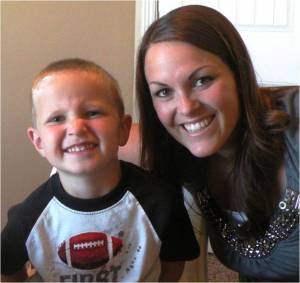
10. CONTACT A CERTIFIED SPEECH LANGUAGE PATHOLOGIST
If all else fails. Contact a certified Speech Language Pathologist.
I have shared with you some fool proof techniques to help your child produce /s/ and use it appropriately in words and conversational speech. However, at the end of the day it is nearly impossible for me to share with you all that I have learned throughout my education as well as my professional work experience. If your child is still continuing to struggle with his/her speech, please contact me for further questions, or contact a certified speech language pathologist in your area today. I promise it will be worth it!!!

